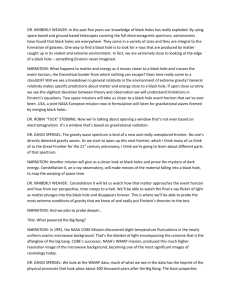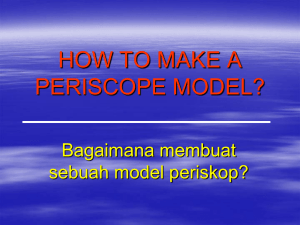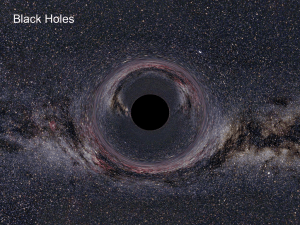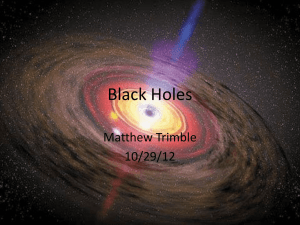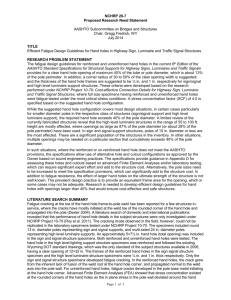Black Holes : A lecture to 6th Formers
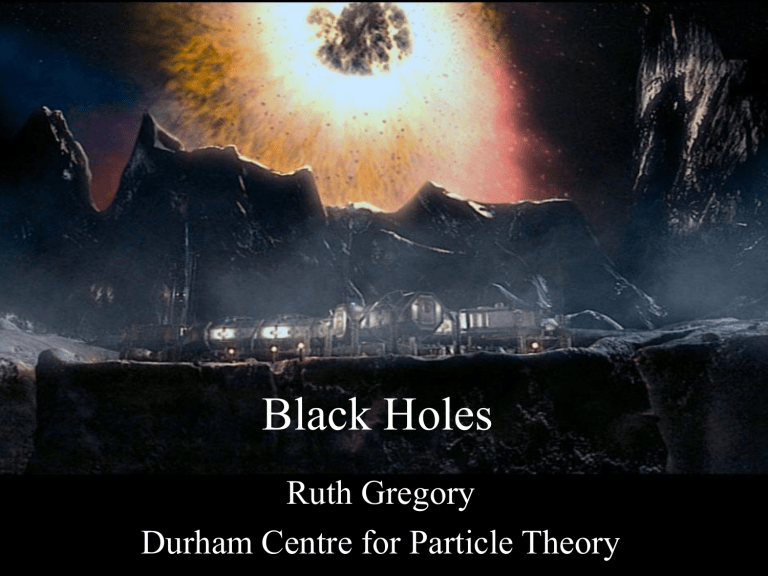
Black Holes
Ruth Gregory
Durham Centre for Particle Theory
Who am I?
• I did my A levels back in the 80’s: Physics,
Chemistry and Maths.
• Then went to Cambridge, degree in Maths and
PhD in Theoretical Physics
• Spent 5 years as a researcher in Chicago
• Back to the UK as a fellow, now a Professor
• Research in gravity, cosmology and extra dimensions
• One child (son) in pre-GCSE year
Outline
• What is a black hole?
• How can we see them?
• Hawking radiation
• Extra dimensions and mini black holes
CLASSICAL
What is a black hole?
QUANTUM
So much mass that escape velocity exceeds the speed of light
Newton’s Law
Inverse square law of gravity
Gives escape velocity 1 m v 2 = GMm
2 r
Get v=c if r = 2GM/c 2 Event horizon
How big is a black hole?
The solar system has a range of different sized objects.
The sun is just a little too small to form a black hole, but suppose we squashed it how big would that black hole be?
r = 2GM/c 2
G = 6.67 x 10 -11
M = 2 x 10 30 Kg c = 3 x 10 8 ms -1 r = 3 km
Solar event horizon
Stellar mass black hole
.
Einstein’s Relativity:
Modern physics owes its roots to Einstein, who revolutionized the way we think of space and time (as well as giving us quantum mechanics). Instead of two separate and absolute quantities, space and time are part of the same canvas: spacetime.
In Special Relativity, spacetime is flat , but in General relativity it is curved .
Einstein’s theory of General Relativity relates matter to curvature, and since curvature is about things not being straight, it tells us that matter effects motion : GRAVITY.
QuickTim e
ᆰ
and a
GIF decom pressor are needed t o see t his pict ure.
The fundamental observable of spacetime gravity is distance , so we write things in terms of the spacetime metric:
s) 2 = f 2 (x,y) [ (
x) 2 + (
y) 2 ]
This example alters Pythagoras, but what if we apply this to stars?
Gravitational redshift
The first thing Einstein tells us is that time is slowed in a gravitational field.
E = h
1
GM/r)
As r gets bigger, the gravitational term becomes smaller and so
gets smaller to compensate. This means light is redshifted
But the photon frequency counts ticks of the clock, so time is s l o w e d d o w n
Schwarzschild
Newtonian physics also gives us redshift, but it is Einstein’s perspective that tells us time is slowing down. It also tells us space warps around any massive object.
The spacetime around a star or planet or black hole is known as the SCHWARZSCHILD SOLUTION.
The distance from the planet or star is stretched by the same amount as time is shrunk. What does this mean in practice?
Tidal Forces
Tidal forces arise because gravitational acceleration is not constant, but falls off as you move away from the star or black hole. So a falling object will be accelerated faster closer to the black hole.
This tidal acceleration goes like GM r 3
QuickTim e
ᆰ
and a
GIF decom pressor are needed t o see t his pict ure.
Spaghettification!
For objects close to a black hole, this is proportional to the inverse square of the event horizon radius.
An astronaut falling into the black hole will be stretched out like a piece of spaghetti!
Orbiting a black hole
.
r 2 = 2GM
L 2 + 2GML 2 r r 2 c 2 r 3
Standard gravitational attraction
Centrifugal repulsion
General relativistic attraction
Can see the shape of orbits by plotting this RHS as
V( r )
Some orbits and their potentials
By altering angular momentum, can get stable orbits at different radii. A stable circular orbit lies at a minimum of V. At r=6GM/c 2 the minimum becomes a point of inflection. This is the innermost stable orbit and can be observed.
Accretion disc
Most black holes are in a binary system, i.e. where there is a companion star. This star can then literally get sucked apart by the black hole.
Cygnus X1:
Observing accretion discs
This makes accretion discs very violent environments, with gases being heated up to very high temperatures. These radiate in the X-ray band at a temperature related to the orbital radius.
So we can measure the innermost stable orbit!
The impossible Planet?
r
From the picture, the black hole subtends an angle of 1˚ in the sky r = tan 1 o ≈ 1 d 50 d
GM ≈ c 2 x 10 -5 ≈ 10 5 m s -2 m -1 d 3 r 2 for a stellar mass black hole
Fairly impossible!
But for a galactic super black hole, r ≈ 10 10 m, and the tidal forces are 10 -8 m s -2 m -1 , which is similar to that on earth.
Milky Way Black Hole
QuickTim e
ᆰ
and a
YUV420 codec decom pressor are needed t o see t his pict ure.
Although X-ray observations give us the most concrete evidence of black holes, the most spectacular confirmation is that of stellar motion at our galactic core. This houses a black hole of 3 million solar masses! We see it by the rapid motion of stars orbiting around a black empty space.
How else might we see a black hole?
Hawking Radiation
Back in the early 1970’s it was realised that if a black hole was truly black, then it had to carry entropy.
Entropy measures disorder, and it always increases in any physical process.
But if a black hole was a thermodynamic object, then surely it had to be a black body: it had to radiate.
Bekenstein put forward values of entropy and temperature needed to make thermodynamics work, Hawking showed how to do this using quantum field theory.
Heisenberg Uncertainty
A unique feature of Quantum Mechanics is the uncertainty principle , which tells us we cannot precisely simultaneously measure position and velocity, or time and energy. This means that empty space is not really empty, but has lots of particles and anti-particles continually pair creating and annihilating. x e + x
E
t ≤ h/2
t ≤ h ≈ 10 -21 s
4
m e c 2 e
Pair creation in curved space
Near the event horizon, it is possible that one of the particles gets drawn into the black hole, while the other escapes. The particle which has been captured has negative energy with respect to an observer at infinity, and so the black hole loses mass.
The black hole appears to be emitting particles, and a full calculation shows this emission is thermal: the black hole is radiating.
Black holes aren’t black!
A black hole is a true black body, and radiates at the Hawking temperature:
T
H
=
3
8
GMk
B
So a solar mass black hole has a temperature of about 60 nK!
But very small black holes have high temperatures, and evaporate very quickly. Can these be formed?
LHC
The L arge H adron C ollider at CERN in Geneva is being run in right now. This will collide protons at huge energies, and will test our theories of fundamental particles. But it will also be able to look for mini black holes…..
Atlas detector at LHC: look carefully for the experimenter!
Mini Black Holes
Typically, black holes have to form when matter is highly concentrated, to within its Schwarzschild radius. But what if we can change this equation?
Braneworlds and extra dimensions change the balance by making gravity stronger. We only think it is weak because we are trapped in four spacetime dimensions.
Why extra Dimensions?
Like Einstein we seem obsessed with finding a “unified” description of nature.
The Standard Model works well for particle physics, but Gravity seems stubbornly classical.
AE:
“God does not play at dice”
NB: “Stop telling God what to do!”
Quantum Forces
The other major development of last century was
Quantum Physics (again pioneered by Einstein) which explains all the small-scale forces of nature, and can include electromagnetism:
• Weak Nuclear Force
(allows nucleons to interact with electrons, also explains radioactivity)
• Strong Nuclear Force
(keeps nuclei together)
• Electromagnetism
String Theory
Replaces particles by strings:
QuickTim e
ᆰ
and a
GIF decom pressor are needed t o see t his pict ure.
But needs TEN dimensions!
..and can explain gravity in the same breath as quantum theory…
Time and relative dimensions in space?
What does 10 dimensions mean?
We are used to 3 space and 1 time dimension, but there is no reason to have only 4 dimensions, other than that is what we see. We are allowed to have more dimensions, if we can find a way to hide them. A bit like the TARDIS!!
• Make them small (Kaluza-Klein)
• Glue ourselves to a sheet (braneworld)
There’s a black hole in my lab!!
Because braneworlds make gravity stronger, black holes form more easily! But we would have seen signals in supernova if they were going to form at LHC.
Summary
Black holes are fun objects to study in Einstein’s GR
They are so compact and heavy, they literally tear space apart
We have good evidence for black holes from X-ray observations
…and also from orbiting stars at our own galactic core.
Black holes can also radiate, and evaporate!
Maybe mini-black holes can form in the lab

